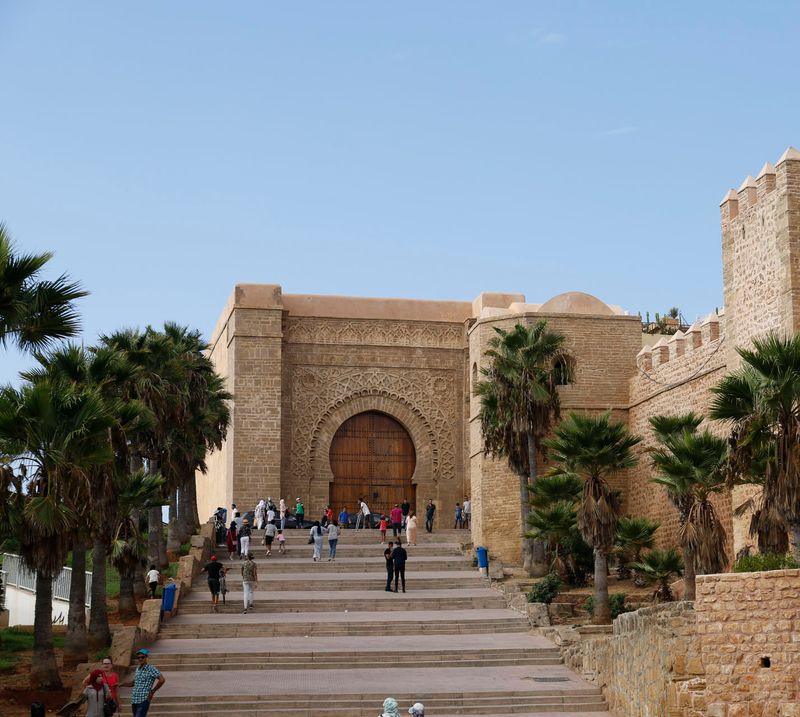Exploring Rabat: A Quick Guide to the Capital City of Morocco

Exploring Rabat: Morocco’s Cultural Capital
Rabat, Morocco’s capital city, is a blend of history, modern art, and beautiful coastal views, making it a must-visit destination for travelers. Known for its tranquil vibe and rich heritage, Rabat provides a unique look into Moroccan culture without the hustle often found in other major cities. Here’s a guide to exploring Rabat’s best sights and experiences.
A Brief History of Rabat
Rabat’s history stretches back over a thousand years, shaped by diverse civilizations and rulers. Originally established as a fortress in the 12th century by the Almohad dynasty, Rabat was a strategic military base for defending against foreign invaders. Its fortified walls, part of the original Kasbah of the Udayas, still stand today as a testament to this era. In the centuries that followed, Rabat evolved under various dynasties, including the Merinids and Saadians, who left behind architectural gems and cultural influence.
In the 17th century, Rabat and neighboring Salé became famous as a pirate republic, a haven for corsairs who dominated Mediterranean trade routes. Later, during the French Protectorate (1912-1956), Rabat was chosen as Morocco’s administrative capital, blending its rich history with European architectural styles and urban planning. Today, Rabat remains Morocco’s capital, recognized for its historical significance and modern urban character, symbolizing the country’s evolution and resilience.
Things to Do in Rabat
1. Kasbah of the Udayas
One of Rabat’s most iconic sites, the Kasbah of the Udayas is a stunning fortress overlooking the Atlantic Ocean. This ancient kasbah, with its narrow, blue-painted streets and Andalusian gardens, offers a peaceful escape. Take a stroll through the cobbled pathways, visit the garden, and enjoy mint tea at a local café overlooking the sea. The view at sunset is particularly breathtaking and a photographer’s dream.
2. Mohammed VI Museum of Modern and Contemporary Art
The Mohammed VI Museum is Morocco’s first major museum dedicated to modern and contemporary art. Here, you’ll find an impressive collection of Moroccan art alongside temporary exhibitions from international artists. The architecture alone is worth a visit, with its sleek, modern design standing out against Rabat’s historic backdrop. If you’re an art lover, this museum provides insight into Morocco’s evolving art scene and showcases the talents of Moroccan artists.
3. Bouregreg River and Waterfront
Separating Rabat from its sister city, Salé, the Bouregreg River is a scenic spot for a leisurely walk or small boat ride. The riverfront has undergone recent development, making it a lively area with cafés, walking paths, and an amphitheater. You can take a fisher boat across to explore Salé or simply relax along the river and enjoy the coastal views. Don’t miss the Hassan Tower nearby, an unfinished minaret that’s one of Rabat’s most famous landmarks.
4. Chellah Necropolis
For a trip back in time, visit the Chellah, an ancient Roman and medieval necropolis. This historical site features crumbling walls, gardens, and even stork nests that add to its mystique. Walking through Chellah’s ruins, you’ll find Roman artifacts alongside remnants from the Marinid dynasty, making it a fascinating blend of history and nature. Chellah’s gardens are beautiful, especially in spring, and it’s a quiet retreat where you can explore Morocco’s layered history at your own pace.
5. Downtown Rabat
Rabat’s downtown area combines traditional Moroccan life with modern urban spaces. You’ll find vibrant souks selling everything from spices to handmade crafts, as well as European-style boulevards lined with shops, restaurants, and cafés. This area is ideal for experiencing local daily life, sampling street food, or people-watching in one of the many cafés. Don’t miss the Art Deco architecture scattered around, reflecting Rabat’s French influence and giving downtown a unique visual charm.
Practical Tips for Travelers
- Getting Around: Rabat is pedestrian-friendly, especially around the main attractions, but taxis are affordable and convenient.
- Best Time to Visit: Spring and fall offer the best weather, but Rabat’s mild climate makes it a year-round destination.
- Local Etiquette: Moroccans are known for their hospitality, so a respectful greeting goes a long way. Dress modestly, especially when visiting religious or historical sites.
Rabat is a Must see in your Trip !
Rabat’s relaxed vibe, fascinating history, and cultural depth make it a memorable stop for any traveler. If you’re interested in exploring with a local perspective, check out my services as a Morocco Local Advisor for tailored recommendations and insider tips. Feel free to reach out through my contact page.











